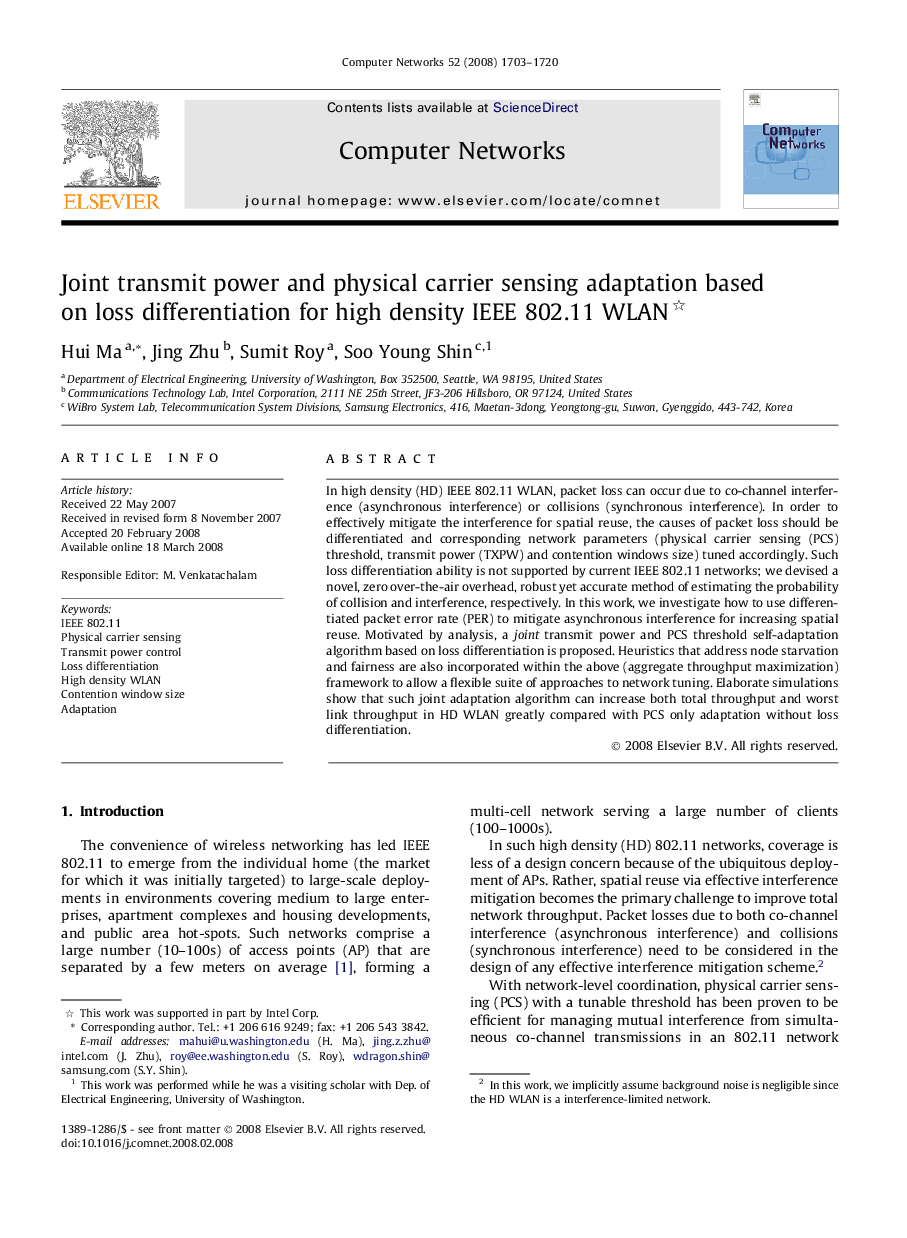| کد مقاله | کد نشریه | سال انتشار | مقاله انگلیسی | نسخه تمام متن |
|---|---|---|---|---|
| 452442 | 694527 | 2008 | 18 صفحه PDF | دانلود رایگان |

In high density (HD) IEEE 802.11 WLAN, packet loss can occur due to co-channel interference (asynchronous interference) or collisions (synchronous interference). In order to effectively mitigate the interference for spatial reuse, the causes of packet loss should be differentiated and corresponding network parameters (physical carrier sensing (PCS) threshold, transmit power (TXPW) and contention windows size) tuned accordingly. Such loss differentiation ability is not supported by current IEEE 802.11 networks; we devised a novel, zero over-the-air overhead, robust yet accurate method of estimating the probability of collision and interference, respectively. In this work, we investigate how to use differentiated packet error rate (PER) to mitigate asynchronous interference for increasing spatial reuse. Motivated by analysis, a joint transmit power and PCS threshold self-adaptation algorithm based on loss differentiation is proposed. Heuristics that address node starvation and fairness are also incorporated within the above (aggregate throughput maximization) framework to allow a flexible suite of approaches to network tuning. Elaborate simulations show that such joint adaptation algorithm can increase both total throughput and worst link throughput in HD WLAN greatly compared with PCS only adaptation without loss differentiation.
Journal: Computer Networks - Volume 52, Issue 9, 26 June 2008, Pages 1703–1720